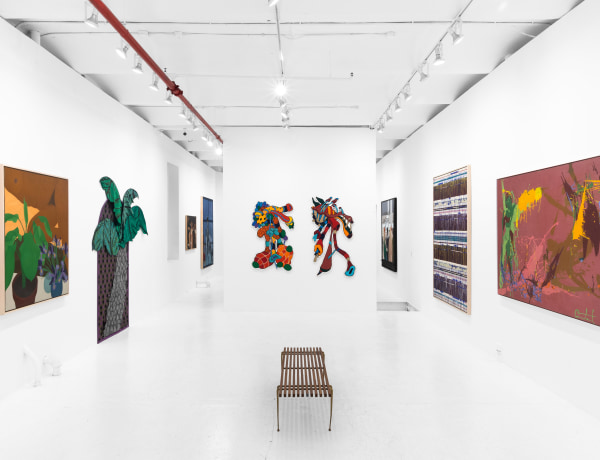
B. Takarazuka, Japan, 1944
Naoto Nakagawa embraces a highly defined realist style. Nakagawa’s work combines his love for still-life painting with his enduring interest in abstraction by reducing his motifs to the oversized still life devoid of other props, setting, or decorative distractions.
Nakagawa declared his intentions to be an artist at the age of ten. His maternal grandfather, Murakami Kagaku, was a famous modern ink painter in the Japanese literati (bunjin) tradition, and Nakagawa was further introduced to the art world through his junior-high teacher and a neighbor who were both involved with the action-art and performance-art activities of the avant-garde Gutai group. Gutai’s irreverent alignment with Jackson Pollock and Willem de Kooning inspired Nakagawa, who also attended the group’s first onstage presentation in 1957.
Nakagawa immigrated from Japan to New York City in 1962 and won a scholarship to the Brooklyn Museum’s art school. There, he was encouraged by his teacher Stephen Antonakos, an artist who used neon lights in his abstract works, and his Japanese classmates and eventual friends On Kawara and Shūsaku Arakawa. Nakagawa soon became a member of the O.K. Harris Gallery hyperrealist stable in the ’70s. His work is characterized by highly keyed depictions of nature juxtaposed with consumer items and high-tech commodities like drills, hair combs, pencils, and bicycles. Not entirely Pop artist nor Photorealist, Nakagawa is interested in “man-made versus nature-made,” a human relationship with nature at times harmonious or violent. The artist lived for five years in rural Vermont, between 1975 and 1979, which sparked his interest in the raw elements of the natural world which were reminiscent of his childhood outside Osaka. He began to balance fragments of earth with industrial images in 1976, and has continued to combine environmental and technological elements in his work since. Embedded in the literal objectivity of his compositions is the Zen meditative practice which defines the artist’s process and informs the central themes of coexistence and balance with nature.
In the 1990s, Nakagawa began employing a woodworker to make scrolled armatures from original designs on rolled drawing paper, upon which Nakagawa painted his still lifes on the inside and outside of the prestretched linen. His series of “Endless Horizontals" from this period depict natural elements like roses and suggest a cycle of birth, death, and regeneration. His textured and impastoed work from the period was partially determined by Nakagawa’s ritual “earth dance,” in which he placed a large painted canvas on the floor and rolled across it to create puckered imprint.
Nakagawa’s paintings have been widely exhibited, starting in 1968 at the legendary avant-garde Judson Gallery in New York, followed by the Obelisk Gallery in Boston, New York galleries Reese Paley, OK Harris, Allan Frumkin, Victoria Munroe, and Feature Inc., and at Fuji Television Gallery and Tamada Projects in Tokyo, Japan. His work has been shown at The Guggenheim Museum, The San Francisco Museum of Modern Art, and the Venice Biennale in 2005, among others. His work is included in many public and private collections in the USA, Europe and Japan, including the New York Museum of Modern Art, Massachusetts Institute of Technology, the Worcester Museum, and The National Museums of Modern Art in Osaka and in Kyoto. The recipient of a National Endowment for the Arts grant, Nakagawa has taught and lectured at Columbia University and Parsons School of Design. He has been a guest lecturer at The Museum of Modern Art, NY, San Francisco Museum of Modern Art, CA, The Japan Society, NY and the Portland Museum, OR.